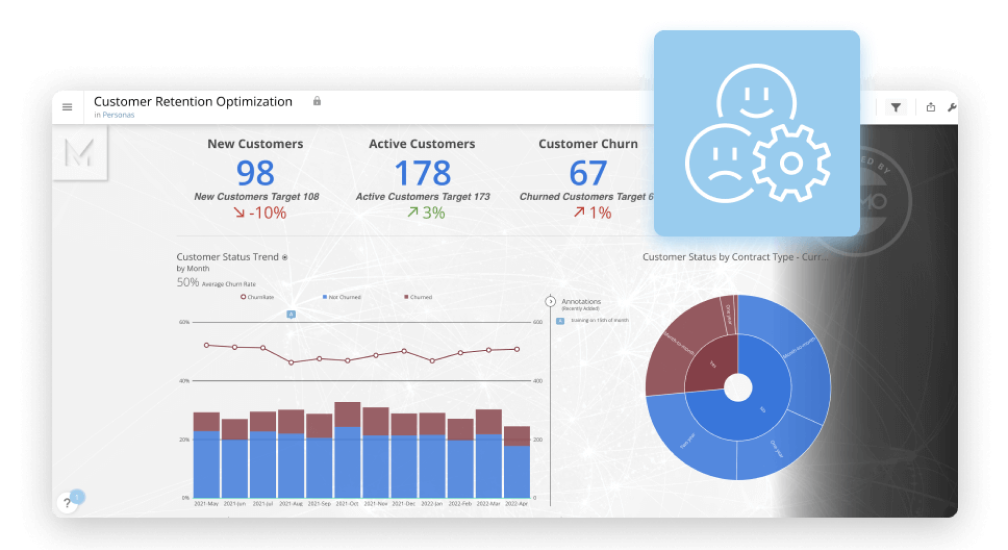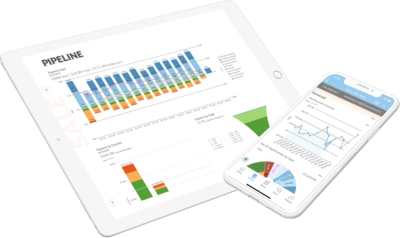Why data-driven businesses are more likely to thrive
A noticeable change in how stakeholders in any firm make decisions occurred during the turn of the century. Making judgments based on “intuition” was once accepted and a common element of board meetings or senior management meetings. Although making decisions based on intuition may have occasionally been successful, stakeholders in a competitive environment require much more than “intuition” to make crucial decisions. Today, technology such as data analytics platforms has set the stage for informed decisions.
What is a data-driven business?
Every day, vast amounts of data are gathered by companies using various technologies. Using dynamic data visualization software makes it possible to make the most of this information. This data can be analyzed to reveal previously unobserved patterns and give decision-makers more power. Organizations that utilize data do so for a number of purposes, such as testing products or understanding customer preferences.

The advantages of a data-driven business
Increased strategic agility
Sales data, material costs, and market estimates are just a few examples of the data businesses have historically used to help them create their business plans. The diversity, speed, and volume of the data accessible to guide those plans distinguish modern companies. Due to the rising adoption of newer technologies and applications that demand low-latency access to high-volume data, data-driven businesses must swiftly acquire, evaluate, and act on new data. Enterprises need flexible networks and agile application platforms that can scale smoothly to match dynamic plans based on shifting customer demands and needs.
Increased customer visibility
An organization can better understand its customers thanks to the effective use of data. By analyzing customer data, companies may be able to learn about consumers’ backgrounds, purchasing preferences, and how they wish to interact with the business. The secret to understanding your clients lies within the analysis of data, not the actual data collection itself. Having the ability to combine pertinent data from the relevant sources to conduct further analysis is crucial. It’s necessary that an organization have a network infrastructure that can handle the depth and complexity of these functions.
Innovation fueled by insight
A data-driven organization may use the findings to drive innovation and improve customer apps, offers, and experiences. Customer data has aided the retail industry, for instance, in determining what customers desire from their in-store encounters. Retailers convert casual buyers into devoted, long-term clients by offering personalized deals, dynamic application interaction, self-checkout, and a smooth transition between the online and in-store experiences. Retailers build the future store through continual innovation, teaching other business sectors how to do the same.
More efficient operations
The basis of any prosperous firm is satisfied consumers. However, many companies fail to recognize the possibility that changes in business processes can result in better client experiences. Businesses learn in real time how to alter their methods using sophisticated data monitoring. Supply chain performance, weather patterns, inventory levels, and equipment status are just a few examples of the data organizations can gather to track and automatically modify operations in response to demand and disturbances. Customers are happier because they get the timely, high-quality services and goods they expect.
Instant capital equipment insights
Too many companies base their capital and maintenance budgets on educated guesses rather than actual data. Those educated judgments are based on predictions of when a machine is going to need replacement or maintenance. The situation in which equipment failure necessitates maintenance and purchases, resulting in lost production and unforeseen costs, is even less desirable. Predictive maintenance has been among the most intriguing uses for business intelligence. With the help of the data, service decisions can be made primarily on real-time data from your equipment. As a result, your company can replace machines when data suggests they are no longer functional and receive notifications before breakdown so that maintenance doesn’t hinder production.
A competitive edge
Like most businesses, yours has probably dabbled in digital transformation using cloud computing platforms and extensive data analysis. To give your company a competitive edge, learn how to effectively utilize data from novel technologies.
Take advantage of cutting-edge technologies like IoT, AI, and SDN (software-defined networking). The retail sector utilizes artificial intelligence (AI) to improve inventories and target customer promotions, as well as the insurance industry to track fraud more effectively. Businesses are using SDN to build more adaptable and quick networks that can quickly adjust to client needs and market trends. The competitive margins that allow one company to prosper while its rivals lag are created through taking advantage of innovative technologies

Issues in transitioning to a data-driven organization
Businesses face challenges, so switching to a more data-driven approach is a viable way for companies to be better equipped to address these challenges. When you consider cultural phenomena like the COVID-19 epidemic and the emergence of online customer behavior as the norm, today’s consumers can get information and data whenever and however they like. Businesses must keep up with consumers and take advantage of the large amounts of customer data generated through online browsing and purchases.
Given that we are producing data at unprecedented rates, it is understandable why so many firms find it challenging to become data-driven enterprises. Today’s businesses deal with enormous amounts of data from a wide array of sources.
As time goes on, it gets increasingly complicated for companies to create a sound data strategy and move toward being data-driven.
Big data is an asset that moves through a business, spanning traditional boundaries and frequently lacking a transparent ownership structure. Companies must understand this. Unstructured data accounts for a majority of all new data, making it challenging to acquire and quantify. The data fluidity makes the problem of data management even more challenging since you need to figure out how to ensure the data is reliable and effectively structured so as to make analysis possible.
Running your organization without the appropriate data analytics tools can be exceedingly difficult. This is particularly true for startups that lack the funds to employ a chief data officer to manage all of this on their behalf. Invest in qualified personnel and robust data management tools in order to efficiently handle your organization’s data.
Conclusion
Any company that wants to stay relevant in the future must have a solid understanding of what makes a data-driven business. Simply put, the impact of the technological world on business development has led to the necessity of becoming data-driven.
Check out some related resources:

Sisense Alternatives & Competitors

10 Power BI Alternatives and Competitors in 2025






